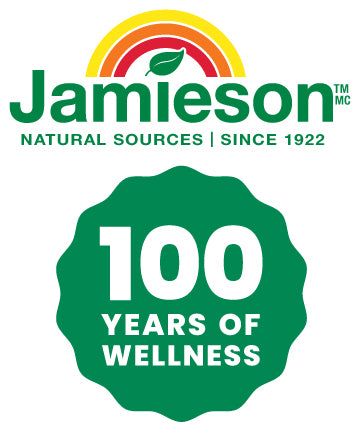Misconceptions surround food sensitivities, with some people even brushing off how dangerous food allergies can be. Even though a food intolerance in one person may only cause mild symptoms, in others, food allergies can be lethal. Read on to understand the different types of food sensitivities, what can be done to lessen food intolerance symptoms, and how to help when someone has an anaphylactic reaction…
According to Health Canada “A food sensitivity is an adverse reaction to a food that other people can safely eat” [1] Food sensitivities are divided into 3 groups with differences in how the food affects the body, as well as how severe the reactions can be.
- Food allergies “are sensitivities caused by a reaction of the body's immune system to specific proteins in a food”.¹ For those with food allergies, their immune system mistakes a food protein as being harmful and responds by creating IgE antibodies. The next time they are exposed to that same food protein, their body releases the IgE antibodies as well as chemicals such as histamine. Histamine can cause reactions throughout the body, including in the respiratory system, gastrointestinal tract, skin or cardiovascular system. Food allergies can even be fatal (more about this later). “Food allergies affect as many as six percent of young children and three to four percent of adults”. [2]
- Chemical sensitivities are “an adverse reaction to chemicals that occur naturally in, or are added to, foods”.¹ Chemicals could include caffeine in coffee, tartrazine, a yellow food colouring in candies, tyramine, an amino acid in aged cheese and red wine, the flavour enhancer MSG and salicylates found in the skin of some vegetables and fruits as well as in tea and spices. Examples of reactions to chemical sensitivities include migraine, wheezing, rashes, diarrhea, brain fog, or hyperactivity.
- Food intolerance is a food sensitivity that does not involve the immune system, and generally it takes a normal-sized portion of food to produce symptoms. This is different than food allergies and chemical sensitivities, where even a tiny amount can cause a reaction. Food intolerances often occur in the gastrointestinal system and are usually caused by an inability to digest certain foods. Although food intolerances do not have the immediate fatal danger that food allergies have, they can lead to malnutrition and other health disorders when necessary nutrients cannot be absorbed properly.
Difference between milk allergy and lactose intolerance
Many people confuse dairy allergy and lactose intolerance, thinking that they are the same thing. However, they are a perfect example of the difference between food allergy and food intolerance. Someone who has lactose intolerance does not have enough of the digestive enzyme lactase to break down the sugar found in dairy products called lactose. Over 70% of the human population have low levels of lactase, resulting in difficulty digesting diary. [3] When someone with lactose intolerance eats dairy, they can have stomach cramps, gas, bloating or diarrhea.
There are options that can help those with lactose intolerance. They can choose lactose-free dairy products, take digestive enzymes with lactase 5-30 minutes before eating dairy foods [4] or they can try probiotics. Research studies have demonstrated that certain strains of both bifidobacterium and lactobacillus probiotics can produce lactase.⁴ In fact, when researchers looked at 15 different research papers on probiotics for lactose intolerance, they concluded that the results showed an “overall positive relationship between probiotics and lactose intolerance.” [5] If you have lactose intolerance, talk to your health care practitioner to see if digestive enzymes and probiotics may help in your particular case.
Basically, lactose intolerance can be incredibly unpleasant, but it is not the same as a milk allergy, which is an allergic immune response to one of the proteins found in diary; casein and whey. Dairy allergies can be immediately life-threatening.[6]
Anaphylaxis
For those with a food allergy, the symptoms of their immune response may quickly change from mild to severe. Anaphylaxis is the most severe form of an allergic reaction. Symptoms can include breathing difficulties and a drop in blood pressure, which can lead to a loss of consciousness, and even death. A person experiencing an allergic reaction may have any combination of the following symptoms: [7]
|
Body System |
Food Allergy Symptoms |
|
Skin |
hives, swelling (face, lips, tongue), itching, warmth, redness |
|
Respiratory |
coughing, wheezing, shortness of breath, chest pain or tightness, throat tightness, hoarse voice, trouble swallowing, nasal congestion or hay fever-like symptoms (runny, itchy nose and watery eyes, sneezing) |
|
Gastrointestinal |
nausea, vomiting, pain or cramps, diarrhea |
|
Cardiovascular |
paler than normal skin colour/blue skin colour, weak pulse, dizziness or light headedness, loss of consciousness, shock |
|
Other |
anxiety, sense of impending of doom, headache, uterine cramps, metallic taste |
700 000 Canadians are at risk for anaphylaxis from food or insect stings, thousands more are affected by medications and other causes [8]
Priority food allergens in Canada
Peanuts and shellfish are the foods that most people associate with anaphylactic allergy, but any food can cause anaphylaxis in an allergenic individual, including strawberries, kiwis, garlic, eggplant, celery, pork or beef. Health Canada has created a list of foods which cause the majority of food allergies. Termed priority allergens, all food products that use any of the following ingredients must state it on the label: “peanuts, tree nuts (almonds, Brazil nuts, cashews, hazelnuts, macadamia nuts, pecans, pine nuts, pistachio nuts and walnuts), sesame seeds, milk, eggs, fish, crustaceans and mollusks, soy, wheat or triticale (a hybrid of wheat and rye grains), and mustard.”³ Sulphites, a type of food additive, are also included in this list because even though they do not cause a true immune allergic reaction, some people do have reactions with allergy-like symptoms.
School allergen laws
In 2006, Sabrina's Law was the first allergen legislation passed in the world. It required every publicly funded school board in Ontario to create and maintain a policy to help students with serious allergies. Sabrina's Law has been used as a model in other provinces and territories, as well as in the U.S. While bans on peanuts and tree nuts in schools have now become quite common, this law was actually named after Sabrina Shannon, a grade 9 student who died from an anaphylactic reaction to dairy in 2003. Her reaction likely resulted from cross-contamination in her school cafeteria from tongs first used for poutine, then to serve her French fries.[9] The policy at each school should reflect the individual student’s anaphylactic food allergens found at the school each year.
One in five Canadian children / teenagers with food allergies are bullied because of their allergies[10]
What to do when someone is having an anaphylactic reaction
Please note that food allergy symptoms can be different from one person to another, and even the same person can have different symptoms from one reaction to the next. When in doubt, use an epinephrine auto-injector (EpiPen®) and then call 911. Epinephrine is the drug form of the hormone adrenaline. Having a shot of epinephrine during an anaphylactic reaction will help to open airways and improve blood pressure. Don’t worry, epinephrine will not harm a healthy person if it is accidentally given to someone who is not having an actual allergic reaction.
With EpiPen®, remember the saying “blue to the sky, orange to the thigh”. This refers to taking the blue lid off (lift straight up, do not twist or bend) and placing the orange part against the outer thigh (avoid pockets or seams of pants), press firmly until it activates and hold for 3 seconds. There are directions written on the side of the epi-pen® in case you are unsure.³
Food allergy resources
There are several resources for those with food allergies including:
- Food Allergy Canada; a national not-for-profit advocacy and education organization for the over 2.6 million Canadians living with food allergy: https://foodallergycanada.ca/
- Allergy Aware offers online anaphylaxis courses for community members affected by anaphylaxis, such as parents, daycare workers, school staff members and coaches: https://www.allergyaware.ca/
- The Canadian Food Inspection Agency posts allergy alerts if a food has been found to have an undeclared allergenic ingredient: CFIA website.
If you experience any kind of adverse reaction to food, even if it is mild, please consult your family doctor to verify if you have a food allergy, intolerance or other food sensitivity. If it is a food allergy, what can start out as a small reaction, can become a more serious reaction the next time you are exposed to the same food. It is always better to know and be prepared.
References
[1] Health Canada. Food Allergies and Intolerances. Accessed Jan 28, 2019 at: https://www.canada.ca/en/health-canada/services/food-nutrition/food-safety/food-allergies-intolerances.html
[2] Health Canada. Food Sensitivities and Intolerances. Accessed Jan 29, 2019 at: https://www.canada.ca/en/health-canada/services/food-allergies-intolerances/food-intolerances/food-sensitivities-intolerances.html
[3] Ugidos-Rodriguez S, Matallana-Gonzalez MC, Sanchez-Mata MC. (2018). Lactose malabsorption and intolerance: a review. Food Funct. Aug 15;9(8):4056-4068.
[4] Fassio F Facioni MS Guagnini F (2018). Lactose Maldigestion, Malabsorption, and Intolerance: A Comprehensive Review with a Focus on Current Management and Future Perspectives. Nutrients. Nov;10(11):1599.
[5] Oak SJ, Jha R. (2018). The effects of probiotics in lactose intolerance: A systematic review. Crit Rev Food Sci Nutri. Feb 9:1-9.
[6] Health Canada. (2017) Milk – Priority food allergens. Accessed Jan 28, 2019 at: https://www.canada.ca/en/health-canada/services/food-nutrition/reports-publications/food-safety/milk-priority-food-allergen.html
[7] Health Canada. (2017). Tree Nuts – Priority food allergens. Accessed Jan 28, 2019 at: https://www.canada.ca/en/health-canada/services/food-nutrition/reports-publications/food-safety/tree-nuts-priority-food-allergens.html
[8] Food Allergy Canada. Anaphylaxis in the Community Course. Accessed Jan 29, 2019. https://www.allergyaware.ca/courses/en-2018-anaphylaxis-in-the-community/module-one/understanding-anaphylaxis/about-anaphylaxis/
[9] Food Allergy Canada. Sabrina’s Law. Accessed Jan 29, 2019 at: https://foodallergycanada.ca/resources/sabrinas-law/
[10] Torabi B, et al. (2016). The impact of bullying in Canadian children with confirmed food allergy and its influence on wearing medical identification. Pediatric Child Health. Vol.21; 5: E39-E42.
[11] Pfizer Canada Inc. How to use an EpiPen®. Accessed Jan 29, 2019 at: https://www.epipen.ca/en/about-epipen/how-to-use






